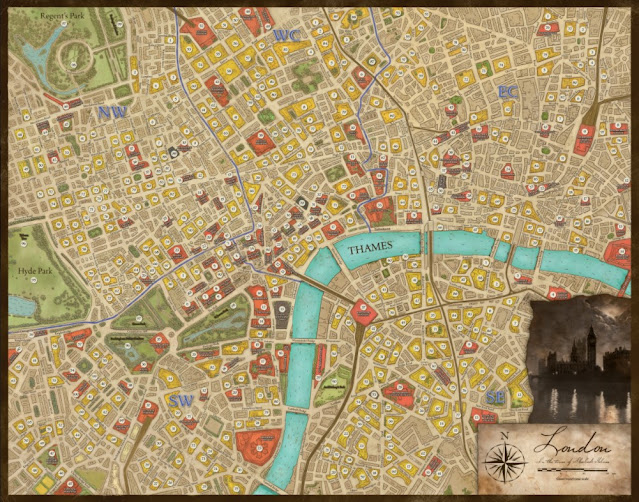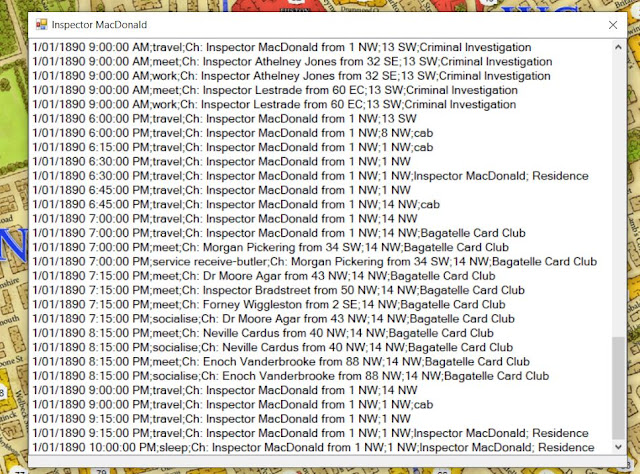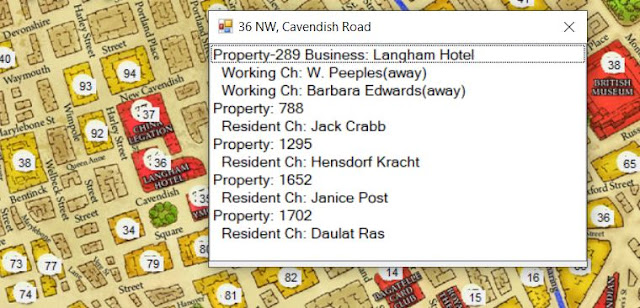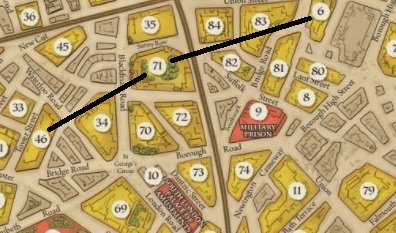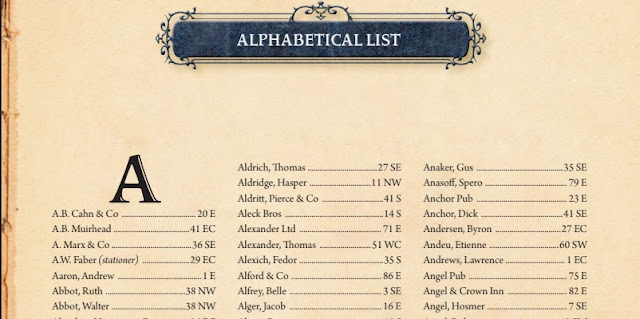Characters travel across the London Map to go to work, make social engagements, and do transactions at businesses. Travel can be via walking, bicycle, cab, carriage, train or ship depending on the character's social class and travel purpose. Travel is done in 15 minute periods which means that some locations may take several time segments to reach. For example, travelling from location 46 Sw to 6 SW by walking in the map section below is likely to involve an interim location, 71.
